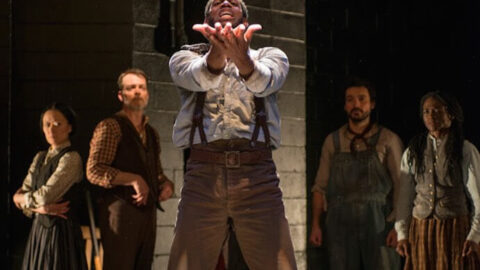In the realm of American folklore, almost nothing quite compares to the tale of John Henry. The Appalachian legend tells of a steel-driving man who hammered holes for dynamite during the construction of the railroad. John was renowned for his speed and skill and eventually tested his hammering prowess in a competition against a steam-powered hammer. John won the race but died once it was over.
Since its birth during Reconstruction, this classic American tale has lived on until the present in music, literature, and popular culture. Though the story has numerous variations, the main plot points remain the same: John Henry foretold his future as a steel-driving man when he was a child, was married to a woman he loved dearly, and eventually he raced against a steam-powered hammer, won, and then died.
In her oratorio, Steel Hammer, Julia Wolfe attempts to take the numerous variants of the John Henry legend and break them down in a hyper-focused exploration of the differences. Wolfe’s take on the John Henry story was performed by the Bang on a Can All-Stars from December 2-6, 2015 as part of the Brooklyn Academy of Music’s Next Wave Festival. From start to finish, Wolfe’s work does not attempt to reconcile the numerous versions of the legend; rather, Steel Hammer attempts to pair the variations alongside each other to highlight the very aspects that make them different and unique. There is no true telling of the John Henry legend, and Wolfe ingeniously plays on that fact in the structure and foundation of Steel Hammer.

Wolfe divides the piece into several movements which each focus on different parts of the John Henry legend. For example, one movement is about the various locations John Henry is supposed to be from. Another is about the variants of John Henry’s wife Polly Ann–or was it Mary Ann, Julie Ann, or Sally Ann? After an extensive exploration of the differences, the latter third of Steel Hammer focuses on the race itself and John’s subsequent death.
Rather than presenting the oratorio straight through as the piece was originally intended, theatrical episodes were woven into the fabric of the piece during the run at BAM. The episodes, written by playwrights Kia Corthron, Carl Hancock Rux, Will Power, and Regina Taylor; each recall the tale of John Henry in a unique way from different perspectives. Each episode also relates back to the moment at which the oratorio is in the story, so the movements that introduce John Henry correspond to theatrical episodes that introduce John Henry, the man and the legend.
The additions made by the playwrights paid off in a big way. Rather than presenting the oratorio straight through, the additional theatrical episodes provide the audience with more context and serve as a guide to walk them through the tale. The episodes certainly provide a more engaging entry into the piece for everyone, including the musicians on stage. Several times in the piece, members of the Bang on a Can All-Stars interact directly with the actors, such as when All-Stars member Mark Stewart stepped center stage to lead the actors in the art of body percussion that exists throughout Appalachia known as hambone.

Aside from theatrics, the music itself is stunning. Steel Hammer fits into Julia Wolfe’s body of works inspired by Appalachian life and folklore, among them the Pulitzer Prize-winning piece Anthracite Fields. Steel Hammer incorporates the folk elements that are so pervasive throughout Wolfe’s Appalachian pieces, including harmonicas, dulcimers, and hambone. The translation from folk to Wolfe’s aesthetic is smooth, natural, and wonderfully done.
Wolfe’s exploration into one of the most quintessential American legends resulted in a profound work of art, the impact of which was only made stronger by the addition of theatrical takes on the same legend. While Steel Hammer the oratorio can stand on its own merit as an exquisite piece of music, Steel Hammer the theatrical version is how the work deserves to be performed. With the insertion of theatrical episodes, Wolfe’s piece packs a powerful punch, engaging the audience in a unique and compelling way.
























